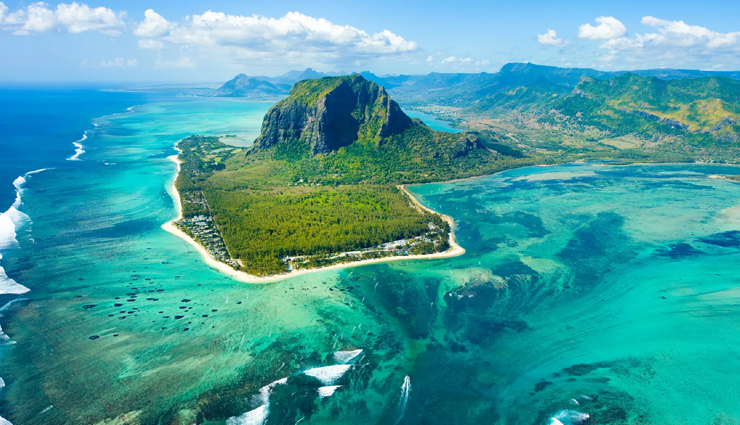

In the northern region of Mauritius lies Arsenal Bay, where remnants of a French Arsenal stand as a testament to its historical significance. Nestled within this bay area, the village of Arsenal once housed a French foundry renowned for crafting cannons and military equipment. Despite its lesser-known status, Arsenal bore witness to a tragic event in 1774 when an explosion claimed the lives of approximately 300 enslaved individuals. Today, guests staying at Hotel Maritim have the opportunity to explore the grounds and observe the haunting ruins firsthand.
Bois Cheri stands as a renowned tea estate, ranking among the top three key attractions along La Route du Thé. Situated approximately twelve kilometers from the renowned Rivière des Anguilles, these expansive tea gardens span around 250 hectares. Visitors can arrange guided tours of the estate, delving into its rich history and operational intricacies, rendering it a pivotal destination for historical exploration in Mauritius.
Additionally, an exhibition area within the estate offers insight into centuries of its heritage. Concluding the tour, guests have the opportunity to indulge in tea tasting sessions, rounding off the experience with a sensory delight.
Among the premier historical sites in Mauritius, St. Aubin Plantation boasts a legacy spanning nearly two centuries. While the sugar factory ceased operations in the seventies, the estate has since transformed, now housing a rum distillery amidst its sprawling lawns. Visitors can explore a range of attractions including the Vanilla House, Spice Garden, and Tropical Garden.
Guided tours lead guests through the various sections of the grand estate, offering insights into its fascinating history, including the renowned sugar factory. Culminating the experience is a sumptuous five-course Mauritian lunch, featuring delectable dishes spotlighting palm, mango, and pineapple flavors, ensuring a memorable culinary journey.
Beau Plan, another former sugar factory turned museum, earns its place on the roster of premier historical destinations in Mauritius. The museum's exhibition intricately weaves together the narrative of sugar production with the island's history, rum trade, and the poignant legacy of slavery.
Expect the tour to span approximately two to three hours, offering a comprehensive exploration of the site's rich heritage. Established in 1797, the factory ceased operations at the turn of the 21st century in 1999. Within the museum, visitors can engage with informative videos and interactive sessions, delving deeper into the historical significance of the locale.
Cap off the experience with a unique tasting session featuring around fifteen varieties of sugar, all originating from Mauritius—a fitting conclusion to a journey through its storied past.
In the 1800s, the British erected five towers as a defensive measure against potential French incursions aimed at inciting slave uprisings. Among these towers, the one situated at La Preneuse has been repurposed into a museum, where knowledgeable guides delve into the remarkable architectural features of these structures. Remarkably, the towers boast walls measuring three meters in thickness and are equipped with copper cannons capable of firing projectiles up to two kilometers away.
Originally constructed in the early 1800s as an opulent mansion, this site has since been transformed into a museum, offering a glimpse into the colonial history of the country. Reflecting tropical architectural influences, the house features approximately 109 doors and numerous rooms, designed to maintain a cool interior even during sweltering summers. Within its walls lie a wealth of antiques, furniture pieces, and maps dating back to the era of the French East India Company, alongside servant quarters and kitchens. Undoubtedly, this is a must-visit historical edifice in Mauritius, not to be overlooked under any circumstances!
Yet another UNESCO World Heritage Site, this location stands as one of the most renowned historical landmarks in Mauritius. It's simply a mountain situated in the southwest of the island, which served as a refuge for numerous slaves who sought to escape their masters in the past. Due to its perilous and secluded terrain, those who managed to evade capture established their own communities within the caves here. This site stands as a powerful symbol of their struggle for liberation and the indomitable human spirit.
Constructed a mere 15 years ago in 2003, this stands among the select historical landmarks in Mauritius. It honors Matthew Flinders, the English cartographer and explorer credited with identifying Australia as a continent. The monument marks the bicentenary of his arrival in the country. Intriguingly, upon his initial landing on the island, Flinders found himself imprisoned for six years due to the ongoing conflict between England and France.
Alternatively referred to as Fort Adelaide, this military structure was constructed by the British during the nineteenth century. From its vantage point, visitors can savor panoramic vistas encompassing the capital, Port Louis, and its harbor. The former barracks have been repurposed into boutiques, offering a selection of souvenirs for purchase.